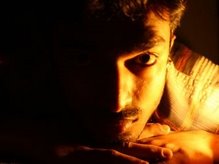Photography has become one of the passions of a lot of people these days, with a good number of them going for DSLRs. With DSLRs comes the interest to shoot in manual mode. Manual shooting involves as a basic step the adjustment of the aperture, shutter speed and ISO settings in the camera to get a proper exposure. The camera will have a pointer indicating the current exposure on a scale ranging from -2 through 0 to +2. If the needle points to -2 means that the photo is going to be underexposed, 0 is proper exposure and +2 over exposure. This again depends on the kind of metering selected for light evaluation. Let me put some points on the usage of each of these features:
1. Aperture: Wider you open the aperture, more blur the objects would be at depths starting from the plane of focus. Closing the aperture would make objects in a wider range from this plane to appear to be in focus. This is because closing of the aperture would make the light cone narrower.
2. Shutter Speed: This is about telling the camera how long the sensor needs to be exposed to light. Greater the shutter speed lesser the time it will be exposed. All other parameters being the same, the shutter speed should be less under low light and high during more light in the surrounding.
3. ISO: This tells the sensor how sensitive it has to be for light. More the value higher will be its sensitivity to light. So even under low light conditions the shutter speed can be kept high by selecting a higher ISO. But this comes at a price. Increasing the ISO causes random electrical activity in the sensor due to the shift from the normal linear region of operation.
Most people feel that it is enough to keep the exposure marker at 0 be it by adjusting the aperture, shutter speed or ISO, if they are not too keen on getting the depth of field. Shutter speed plays an important role while capturing moving objects. If you want them to appear to be relatively static, choose a higher shutter speed. But wrt the exposure to light, shutter speed almost gives a linear relationship, I mean the amount of light collected by the sensor in x sec will be almost half of the amount of light collected in 2x secs (unless of course it is not saturated). I dont want to talk about the ISO parameter simply because I started writing this article to explain the consequences of aperture variation on a photograph and so would like to stick to that. Will come up with some sample images in my next post to explain about the effects of aperture variation.



